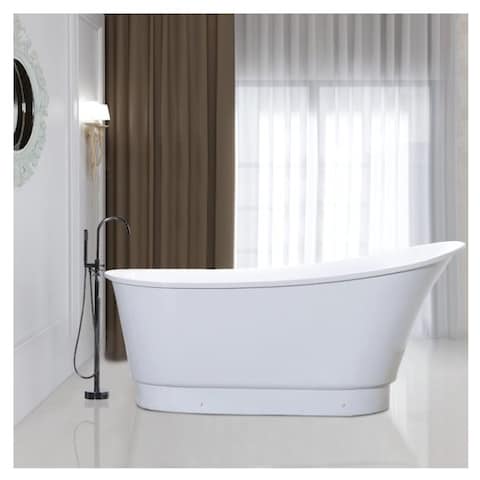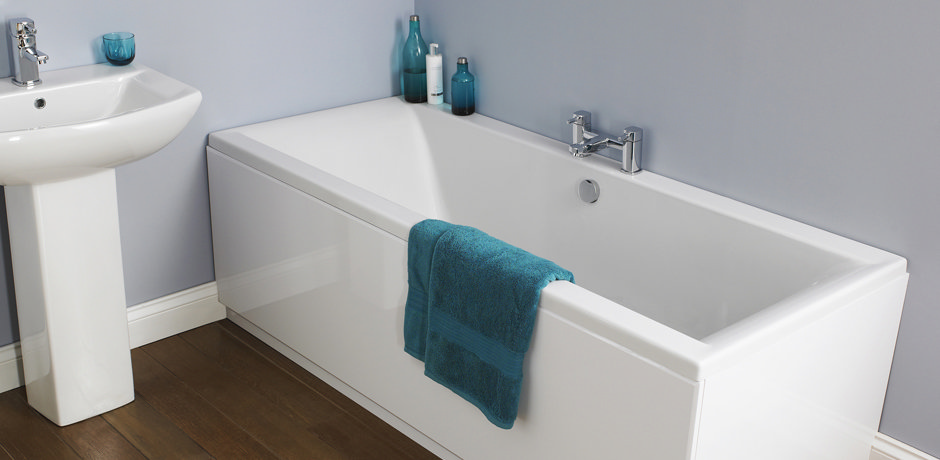Plumbing Basics: A Must for Installing a Bathtub
Plumbing Basics: A Must for Installing a Bathtub
Blog Article
What are your opinions regarding Tools You Need to Install a New Bathtub ?

Setting up a tub isn't specifically rocket science, but it does need solid plumbing, woodworking, and also occasionally, tiling skills. Replacing an old bathtub with a new one is also a moderately challenging job. If the old tub is readily obtainable, the job can relocate speedily; if you need to open a wall surface to eliminate the old tub and position the brand-new tub, the task is a lot harder. In either case, the task is within a residence handyman's skills, although you will certainly require a helper to move out the old bathtub and embeded in the new one. See to it you have certified yourself for the job as well as fit attempting it. As opposed to employing a contractor to take control of a halfway-completed task, it is much better to take into consideration employing one before you start. Chances are you may require a specialist plumber to make tube connections.
This short article will certainly aid you mount a new tub in your washroom if you have already purchased a new tub as well as do not require to alter the setup of your previous supply of water pipes.
Your tools and material checklist should comprise the following:
Removing Old Touches
If you require to change old taps with brand-new ones as a part of your installment, then the first thing you ought to do is detach the water supply. After doing so, switch on the faucets to drain any type of water continuing to be in the system. The process of eliminating the existing faucets can be fairly problematic due to the limited accessibility that is often the situation.
Utilize a basin wrench (crowsfoot spanner) or a tap tool to undo the nut that connects the supply pipes to the taps. Have a cloth ready for the remaining water that will certainly originate from the pipelines. When the supply pipes have been removed, use the same device to loosen up the nut that holds the faucets onto the bath/basin. You will certainly need to stop the solitary faucets from turning during this process. When the taps have actually been gotten rid of, the holes in the bath/basin will need to be cleansed of any old securing substance.
Before carrying on to fit the new taps, contrast the pipeline links on the old taps to the brand-new taps. If the old taps are longer than the brand-new faucets, then a shank adapter is required for the brand-new faucets to fit.
Suitable New Touches
If the tails of the brand-new taps are plastic, then you will need a plastic port to avoid damages to the string. One end of the adapter fits on the plastic tail of the tap and the other end provides a link to the current supply pipelines.
If you need to fit a monobloc, then you will certainly require lowering couplers, which connects the 10mm pipe of the monobloc to the common 15mm supply pipeline.
Next off, place the faucet in the placing opening in the bath/basin ensuring that the washers remain in place in between the faucet and also the sink. Safeguard the tap in place with the manufacturer given backnut. As soon as the faucet is safely in place, the supply pipes can be connected to the tails of the faucets. The faucets can either be attached by utilizing corrugated copper piping or with normal tap adapters. The former type needs to be linked to the tap finishes first, tightening up just by hand. The supply pipes can later on be linked to the various other end. Tighten up both ends with a spanner after both ends have been linked.
Installing the Tub
Making use of the two wood boards under its feet, position the bathtub in the needed placement. The wood boards are useful in uniformly spreading the weight of the tub over the location of the boards as opposed to concentrating all the weight onto four small points.
The next objective is to make certain that the bathtub is leveled all round. This can be accomplished by inspecting the spirit level as well as changing the feet on the bath tub till the level reviews level.
To install taps, fit the bottom of the outermost versatile tap adapter to the suitable supply pipe by making a compression sign up with; then do the very same for the various other tap.
Switch on the supply of water as well as check all joints and brand-new pipework for leakages as well as tighten them if needed. Fill up the bath tub as well as also check the overflow electrical outlet as well as the normal electrical outlet for leakages.
Finally, deal with the bathroom paneling as explained in the producer's user's manual. Tiling as well as sealing around the tub should wait till the bathtub has actually been utilized at least once as this will resolve it right into its last setting.
Getting ready for the Setup
First of all, the supporting frame supplied with the bathroom needs to be fitted (if needed) according to the producer's guidelines. Next off, fit the faucets or mixer to the bathtub. When fitting the tap block, it is necessary to make sure that if the tap features a plastic washing machine, it is fitted in between the bathroom and also the taps. On a plastic bath, it is also sensible to fit a supporting plate under the taps unit to avoid stress on the tub.
Fit the versatile faucet ports to the bottom of the two faucets using 2 nuts and also olives (sometimes supplied with the tub). Fit the plug-hole electrical outlet by smearing mastic filler round the sink electrical outlet hole, and after that pass the electrical outlet via the hole in the bath. Make use of the nut supplied by the manufacturer to fit the plug-hole. Check out the plug-hole outlet for an inlet on the side for the overflow pipeline.
Next, fit completion of the versatile overflow pipeline to the overflow outlet. Afterwards, screw the pipe to the overflow face which need to be fitted inside the bathroom. Make sure you make use of all of the supplied washing machines.
Connect the trap to the bottom of the waste electrical outlet on the bathtub by winding the string of the waste electrical outlet with silicone mastic or PTFE tape, and screw on the catch to the electrical outlet. Connect the bottom of the overflow tube in a similar manner.The bathroom need to now be ready to be suited its last placement.
Tiling Around the Bath tub
In the area where the bath meets the tile, it is necessary to seal the joins with a silicone rubber caulking. This is essential as the fitting can move enough to split an inflexible seal, creating the water to penetrate the wall in between the bathroom and also the tiling, bring about complications with dampness and possible leaks to the ceiling below.
You can choose from a selection of coloured sealers to assimilate your fixtures and installations. They are marketed in tubes and also cartridges, as well as are capable of sealing gaps approximately a size of 3mm (1/8 inch). If you have a bigger space to fill, you can fill it with twists of drenched newspaper or soft rope. Remember to constantly fill up the tub with water prior to securing, to enable the movement experienced when the bathtub remains in use. The sealer can break fairly very early if you do not think about this motion prior to securing.
Alternatively, ceramic coving or quadrant floor tiles can be used to border the bath or shower tray. Plastic strips of coving, which are easy to use and also cut to dimension, are also conveniently available on the marketplace. It is recommended to fit the floor tiles using water-resistant or water-proof adhesive as well as cement.
Bathtub Installation
How Important Is A Bathtub To Your Home?
High-quality baths, showers, and other bathroom updates are necessary when considering a smart investment in your home. It’s a room that you go to every day and one that is constantly being used by guests.The bathroom is one of the top trafficked rooms in a home and also one of the most valuable in terms of home resale.
Install Piping Before Tub
You will be using your existing drain and waste vent system, but pipes required include the hot and cold water supply lines and a pipe leading to a shower head. A mixing valve and shower head are also needed. Air chambers may be required.
Position the Tub
Lower the tub into place so that the continuous flange fits against the wall studs and rests on 1’x4' or 2’x4' supports. Anchor the tub to the enclosure with nails or screws inserted through the flanges into the studs.
NOTE: Remember, bathtubs and shower stalls may require support framing. A bathtub filled with water is extremely heavy, so check building codes and framing support before installing the tub.
Assemble Drain Connections
Assemble the bathtub drain connections by connecting the tub overflow with the tub drain above the trap, not beyond it. The trap will have a compression fitting that screws over the arm of the overflow assembly.
Place a Pipe For the Shower Head
First, locate a brass female threaded winged fitting and attach it to a framing support via a screw or a nail. Then run a pipe up the wall for the shower head. Sweat or solder the other side of the brass fitting to the top of the pipe.
Attaching Hot and Cold Water Lines
Attach your water lines for both hot and cold by sweating these directly into the hot and cold ports of the mixing valve. The mixing valve will be how water enters the tub’s system, not by the pipes themselves.
Install the Spout
Extend a piece of 1/2 inch pipe, or whichever length is specified in the manufacturer’s instructions, for the tub spout. Sweat on a male threaded fitting at the end of the pipe or use a brass nipple of the proper length and a 1/2 inch cap.
NOTE: At this point you should have your rough-in plumbing work inspected before proceeding further.
Check For Leaks
Restore the water pressure and check the drain connection and the supply pipes for any sign of leaking.
estore the Bathroom Wall
Replace the wall with moisture-resistant drywall as a base for your wall covering. Seal the joints between the wall and your new tub with silicone caulk as protection against water seepage.
https://www.berkeys.com/2016/12/02/bathtub-installation-dallas/

We had been introduced to that report about How to Install a Bathtub Yourself through a good friend on another web page. Sharing is nice. You won't know, you could be doing someone a favor. Many thanks for taking the time to read it.
Stress less, ring us. Report this page